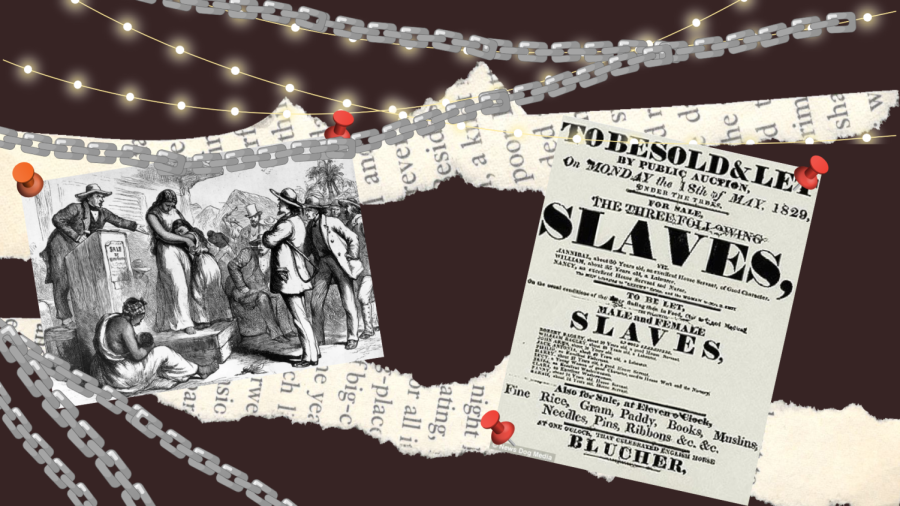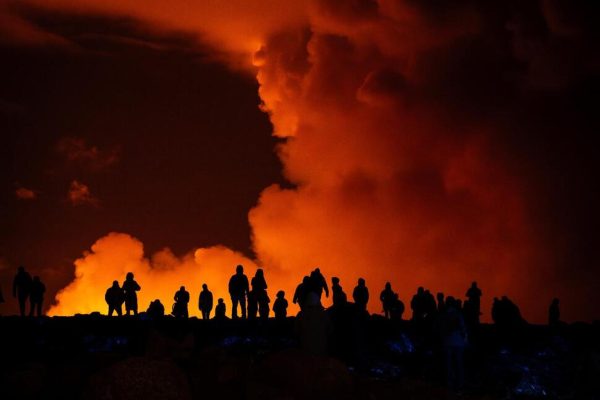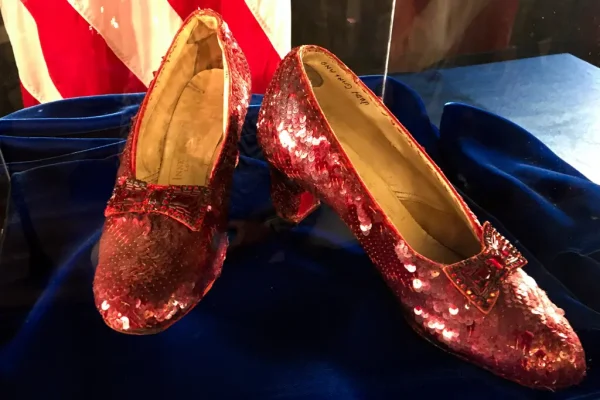The Heartbreaking History of New Year’s
As people celebrate the new year, many fail to remember the tragic origin of this holiday in the US
January 26, 2023
Happy New Year! It’s 2023, a fresh start for everyone! The words “New year, new me” fill social media captions and the voices of millions across the globe. With this comes the annual new year’s sales. Clothing brands, furniture stores, and car dealerships advertise their great deals when kicking off the year. What many don’t know is where these sales came from. Thinking about crazy low rates when it comes to leasing a new vehicle, one may not believe the sinister origins of this practice. Many new year’s traditions in the US stem from racism, murder, and slavery.
In the early years of the US, when slavery was still the largest used labor practice, people were leased out by their white enslavers. These leases took place all on one fateful day known as “Heartbreak Day”. What is heartbreak day you may ask? Well, you and your friends may know it as New Year’s Day. Back in the 1800s, some Americans rang in the new year reflecting on the past and attending church services. Others were doing the same thing we do today. Parties, gatherings, and celebrations consisted of people dressing up in their finest attire and having the time of their lives. There were some traditions that we didn’t keep going. On the east coast, wealthy white people would go door to door, wishing a happy new year to all who answered. These people would usually be invited in for a drink or two. This could be seen as a form of adult trick-or-treating. Without electricity, this mainly took place during the day when the light was naturally available. Children were also invited to these parties but not as guests. They were put to work during the party. Regardless of age, these children were usually working as waiters and bartenders. This practice is not continued for good reason. There is even an account of a wealthy family at this time who would annually get dressed in their finest clothes, begging partying early in the morning with extravagant décor and hors d’oeuvres. This event was something to look forward to but the party didn’t end there.
In southern states, during the afternoon, people would gather in the town square for a huge social gathering. This party featured a large wooden stage in the middle of the square with the townspeople all around it. This stage would showcase an auction. White townspeople stood in front of the stage, typically drunk and ready to bid. Behind the stage something much more sickening took place. A group of enslaved people was brought to be sold to the highest bidder. This time showcased an increase in industrialized farming equipment meaning farmers didn’t need as many free workers. Since these farmers already owned these slaves, they decided not to free them, but rather invent the concept of leasing their workers to other people who would need them more. This made slave labor more accessible to the middle class. Keep in mind, at this time, owning slaves was a status symbol. The fact that poorer people now had slaves meant that they could profit and support themselves more. One would see increased wealth as a good thing if it weren’t shackled by the chains of racism and enslavement.
To the townspeople, this day was called hiring day. For them, it was a day to look forward to. Behind that curtain, slaves called this Heartbreak Day which feels more accurate. It was a day when families were torn apart. Children were ripped from their mothers’ arms in the name of labor. One account of this comes from a man named Israel Campbell who grew up in slavery. When he was just a baby, Israel was separated from his mother. After spending four years without his mother, at nine years old, he was brought to auction and leased for only ten dollars. He spent a year working for his new employer. When Christmas came around, Israel requested to see his mother but was denied. Instead, he had to spend Christmas dinner with his master. Other implications were made regarding his master. In return, Israel ran away. He did this during the annual period between Christmas and New Year when slaves would receive treats like alcohol, confectionery foods, and even time off. The term “time off” is used loosely of course. This period was not introduced out of kindness, but to disprove rumors of mistreatment and to ease whispers of possible revolts. Even though Israel was risking severe punishment, he only wished to see his mother. This nine-year-old boy was lucky enough to reach his mother’s location and spend time with her. He reported that these few days were the longest period he got to spend with her due to their situation. Unfortunately, this was the last time he would spend the holidays with her. Like clockwork, Heartbreak Day came and the child’s life was uprooted and he was auctioned off once more.
Going back to the auctions, when all is said and done and slaves were sent to their new locations, the women who were auctioned would usually work as cooks in their households. They would also fill roles in sewing, cleaning, doing laundry, and even working as wet nurses. New mothers who were enslaved would be ordered to breastfeed their enslaver’s children. As for men, they were required to conduct very demanding labor. Many would work as bricklayers, ironworkers, or even laying tracks for railroads. Children were put to work in fields and as house servants.
While these jobs had no downtime, slaves were able to hatch plans of escape. This was extremely difficult due to widespread slave patrol. Patrol workers’ jobs were to search for enslaved people who were trying to make a run for it. If apprehended, these people were beaten within inches of their lives and returned to their masters. Unsurprisingly, these patrollers were average white men with guns who wished to fearmonger slaves into submission. This Patrol was gradually transformed into what we now know as police officers. This is one very prominent argument in the call to action from 2020’s Black Lives Matter protests. The idea that the foundation of our modern police force is a slave-catching patrol of racist volunteers is an understandable argument along with the other points made by today’s activists.
With slaves continuing to disappear from their masters, a law was passed to assist in handling them. This was known as the Fugitive Slave Act. This act essentially required slaves to be returned to their owners even if said slave had already made it to a state where slavery was not practiced. The thing is, this “law” only reinforced the concept of hunting down human beings. Even in the US Constitution, the ordering of fugitive slaves to be returned is mentioned. Similar to the police force, this was also a prominent topic during the BLM movement. There would be times when enslaved people turn to suicide when caught because they would’ve rather died than return to slavery.
A man named Shadrach Minkins lived a life of enslavement until the age of thirty-six. Shadrach planned to stow away from his life on a ship to Boston. He was able to find a job as a waiter in the city. One day two men attacked him at his place of work, revealing themselves as US marshals. They enforced the Fugitive Slave Act, placing him in jail. While awaiting his trial, Shadrach was freed from the courthouse by a large group of protesters. It didn’t take long for this group to completely storm the building, releasing him. The next few weeks consisted of Shadrach being smuggled from town to town, reaching Canada. He was able to settle in Montreal and live his life with a family of his own. Most slaves were not nearly as lucky as Shadrach.
In September 1862, President Lincoln announced the date of the Emancipation Proclamation. The date being, January first, 1863, Heartbreak Day. After centuries of slavery, slaves didn’t trust this announcement. For the next three months, every slave in the US sat in uncertainty awaiting the truth as to what this Heartbreak Day had in store. That upcoming new year’s eve held hope that the proclamation would live up to Lincoln’s promise. If so, what would happen next? That specific New Year’s Eve was known as “Watch night”. Groups of Black Americans and slaves spent the night in churches praying together. They were praying for a better future. When the big day rolls around, Lincoln’s promise is kept. The announcement was bittersweet for many. The announcement read “ all persons held as slaves… are and henceforth shall be free.”
Overnight, over three and a half million people were freed. However, enslaved people in border states between the north and south were not addressed in the proclamation. Thus, for hundreds of thousands of enslaved people, Heartbreak Day went on, as scheduled. Official hiring practices for slaves did not stop until the end of the civil war in 1865.
To this day, Black communities celebrate Watch Night in remembrance of those who came before them. This is a very crucial part of American History that many go through life without knowing anything about. Many history books skip past the period of uncertainty between emancipation and true freedom for people of color in the US to downplay the suffering that took place at the hands of our government’s policies. We must remember the full and honest story of how our country became “ indivisible with justice for all”.











